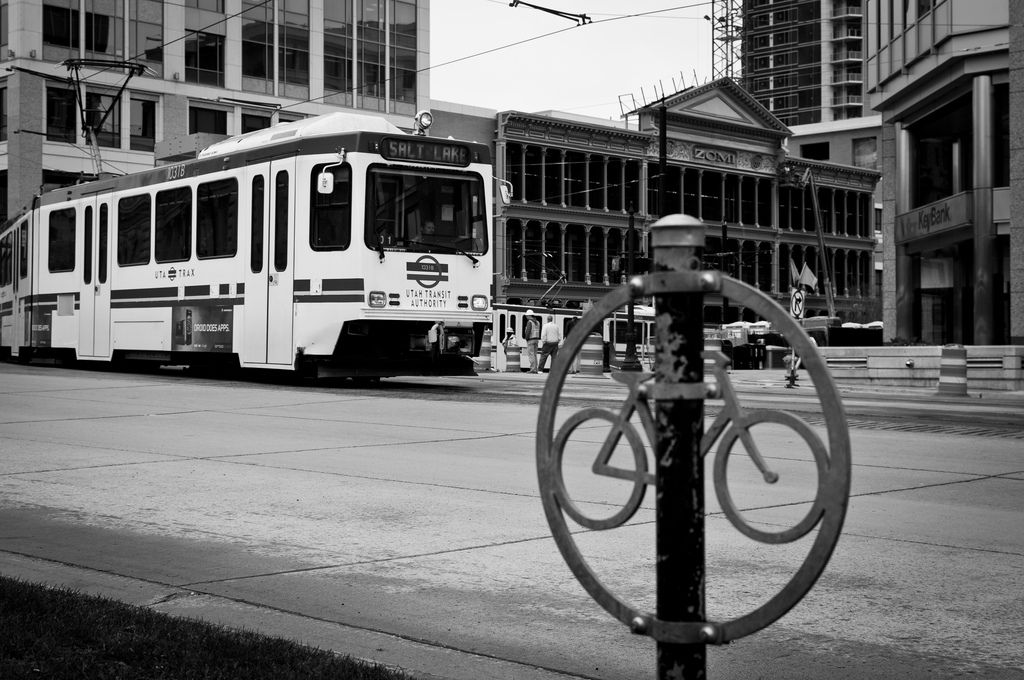

UTA has many locations where you can store your bike near a UTA train stop. You may need to find a place to store your bike near a UTA TRAX or FrontRunner stop. Train cars equipped with bike racks have a bicycle icon near the door of the cars with bike racks. On TRAX and FrontRunner there are several ways to secure your bike. We have racks on many of our train cars as well. It is very easy to use the bike racks on UTA! Hundreds of people every day take their bikes on the UTA system. Combine the benefits of biking with the convenience of UTA! Using bike racks on buses and trains Get your heart pumping and help improve the air quality by keeping your car parked and getting where you need to go. Many people ride UTA and their bike to work, school, stores or other places every day and you can too! Hop on your bike, get to your nearest stop (bus, TRAX or FrontRunner) and ride UTA. Retrieved April 9, 2013.Ride UTA, then bike to get to your final destination! ^ Fattah, Geoffrey (September 30, 2003).

"Work starts on TRAX branch to U.: Few problems now, but some along line uneasy". ^ "Salt Lake County System Map" (Map).Stadium Station served as the eastern terminus of the University Line from its completion through the opening of a three-station expansion further east on Septemthe University Medical Center presently serves as the eastern terminus. The station opened as one of the four new TRAX stations included as part of the University Line. The naming of the station Stadium (due to its proximity to Rice–Eccles Stadium) was made official by the UTA Board on April 25, 2001. The station was opened on Decem as part of the former University Line and is operated by the Utah Transit Authority.įollowing the approval of federal funding in February 2000, construction of the University Line commenced on August 7, 2000. The station is part of a railway right of way that was created specifically for the former University Line. Unlike most TRAX stations, Stadium does not have a Park and Ride lot. Installed in December 2001, the sculpture was commissioned by the Salt Lake City Arts Council to commemorate the 2002 Winter Olympics. As part of the UTA's Art in Transit program, the station features a woven bronze sculpture created by Michael Stutz entitled Flame Figure. ) The area west of the station is older residential housing southeast of the station is the Mount Olivet Cemetery. (Rice–Eccles Stadium was the site of the Opening and Closing Ceremonies of the 2002 Winter Olympics, as well as home of the Real Salt Lake major league soccer team. Situated on the western edge of the University of Utah Campus, the station is just west of the University's Rice–Eccles Stadium with the stadium's parking lot in between. The station is accessible from both 400 South and 500 South, but not University Street (except at the two previously indicated streets). However, the station's two side platforms are actually located immediately east of a one-way (southbound only) section of University Street ( SR-282). The address listed by UTA for the station is 1349 East 500 South (East University Boulevard/ SR-186). The Red Line provides a service from the University of Utah Medical Center to the Daybreak community of South Jordan. Stadium station is a light rail station serving the Rice–Eccles Stadium on the campus of the University of Utah in Salt Lake City, Utah, United States, served by the Red Line of the Utah Transit Authority's (UTA) TRAX light rail system.


 0 kommentar(er)
0 kommentar(er)
